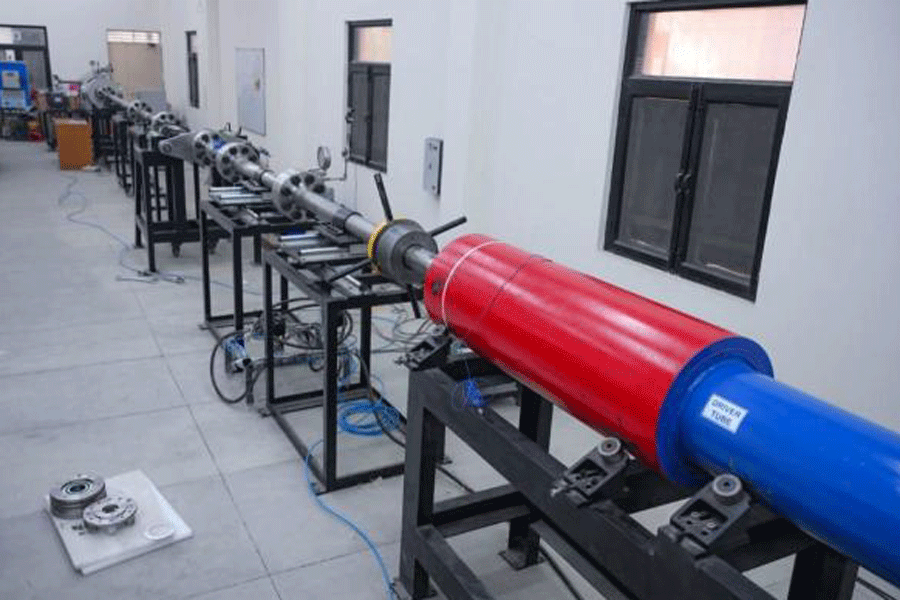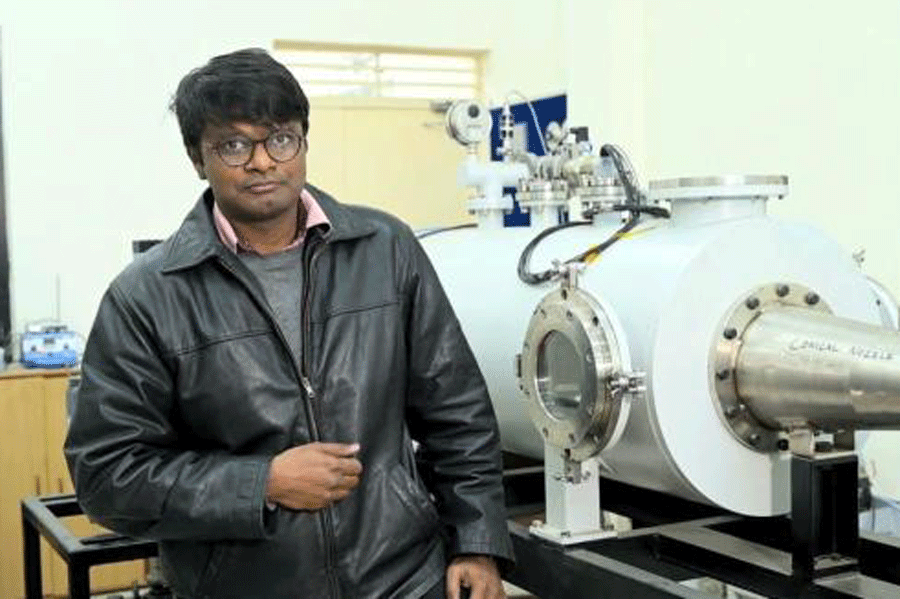India has gained the capacity for aerodynamic studies of space capsules and cruise missiles zipping through the Earth’s atmosphere at speeds up to 10kmps through a test platform developed at the Indian Institute of Technology, Kanpur.
The 24m-long tunnel-shaped structure, developed by researchers at the IIT Kanpur’s aerospace engineering department, will enable simulations of hypersonic conditions that India’s proposed Gaganyaan space capsule and cruise missiles will encounter during flights.
“Current hypersonic testing facilities in the country support at most 5 kilometres per second,” Mohammed Ibrahim Sugarno, an associate professor in aerospace engineering, who led the development efforts, told The Telegraph. “Our facility can generate speeds up to 10 kilometres per second.”
The three-year development effort that involved pen-and-paper calculations, computer simulations and mechanical fabrication of the tunnel was funded by the department of science and technology, an arm of the Union science ministry, and the Aeronautical Research and Development Board, a unit of the Defence Research and Development Organisation.

The new hypersonic test platform at IIT Kanpur. The Telegraph
“This (facility) will empower India’s space and defence agencies with domestic hypersonic testing capabilities for critical projects and missions,” IIT Kanpur director S. Ganesh said in a statement.
Until now, Ibrahim said, researchers in India, who had to conduct aerodynamic studies at speeds greater than 6km per second, had to rely on commercial hypersonic platforms outside the country. Australia, China, Germany, Japan, the UK and the US have such facilities.
Hypersonic testing platforms are typically used to study the behaviour of subscale or miniature versions of flight vehicles — such as the Gaganyaan space capsule or cruise missiles — during their hypersonic flight phases in the Earth’s atmosphere.
The Gaganyaan capsule, for instance, is expected to achieve speeds of 7kmps, Sugarno said. In a typical test, a miniature version of the capsule will be equipped with tiny sensors and placed in the tunnel to experience airflow speeds of up to 10kmps.
The sensors allow researchers to observe — by measuring pressure loads and heat transfer — how the vehicle will behave at the hypersonic speeds. “We can tailor the content of the gas to simulate the atmospheres of other planets too,” Ibrahim said. “This would allow simulation and testing of a Mars landing, for instance.”
The high-speed airflow in the tunnel is generated primarily from shock waves created by firing a piston that compresses air down a 6m tube at speeds up to 200m per second and bringing it to an abrupt stop without any damage to the platform. Another mechanism accelerates the initial blast of airflow to the maximum speeds up to 10kmps.
“This project involved basic physics equations, fluid dynamics and precision engineering,” Ibrahim said. “The trickiest part was getting the piston to do its task.”










